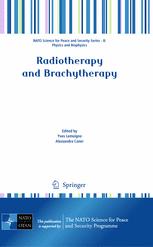

Most ebook files are in PDF format, so you can easily read them using various software such as Foxit Reader or directly on the Google Chrome browser.
Some ebook files are released by publishers in other formats such as .awz, .mobi, .epub, .fb2, etc. You may need to install specific software to read these formats on mobile/PC, such as Calibre.
Please read the tutorial at this link: https://ebookbell.com/faq
We offer FREE conversion to the popular formats you request; however, this may take some time. Therefore, right after payment, please email us, and we will try to provide the service as quickly as possible.
For some exceptional file formats or broken links (if any), please refrain from opening any disputes. Instead, email us first, and we will try to assist within a maximum of 6 hours.
EbookBell Team

4.4
82 reviewsThis book reports the majority of lectures given during the NATO Advanced Study Institute ASI-982996, which was held at the European Scientific Institute of Archamps (ESI, Archamps – France) from November 15 to November 27, 2007. The ASI course was structured in two parts: the first was dedicated to what is often called “teletherapy”, i. e. radiotherapy with external beams, while the second focused on internal radiotherapy, also called “brachytherapy” or “curietherapy” in honour of Madame Curie who initiated the technique about a century ago. This ASI took place after the European School of Medical Physics, which devoted a 3 week period to medical imaging, a subject complementary to the topics of this book. Courses devoted to nuclear medicine and digital imaging techniques are collected in two volumes of the NATO Science Series entitled “Physics for Medical Imaging Applications” (ISBN 978-1-4020-5650-5) and “Molecular imaging: computer reconstruction and practice” (ISBN 978-1-4020- 8751-6). Every year in autumn ESI organises the European School of Medical Physics, which covers a large spectrum of topics ranging from Medical Imaging to Radiotherapy, over a period of 5 weeks. Thanks to the Cooperative Science and Technology sub-programme of the NATO Science Division, weeks four and five were replaced this year by the ASI course dedicated to “Physics of Modern Radiotherapy & Brachytherapy”. This allowed the participation of experts and students from 20 different countries, with diverse cultural background and p- fessional experience.